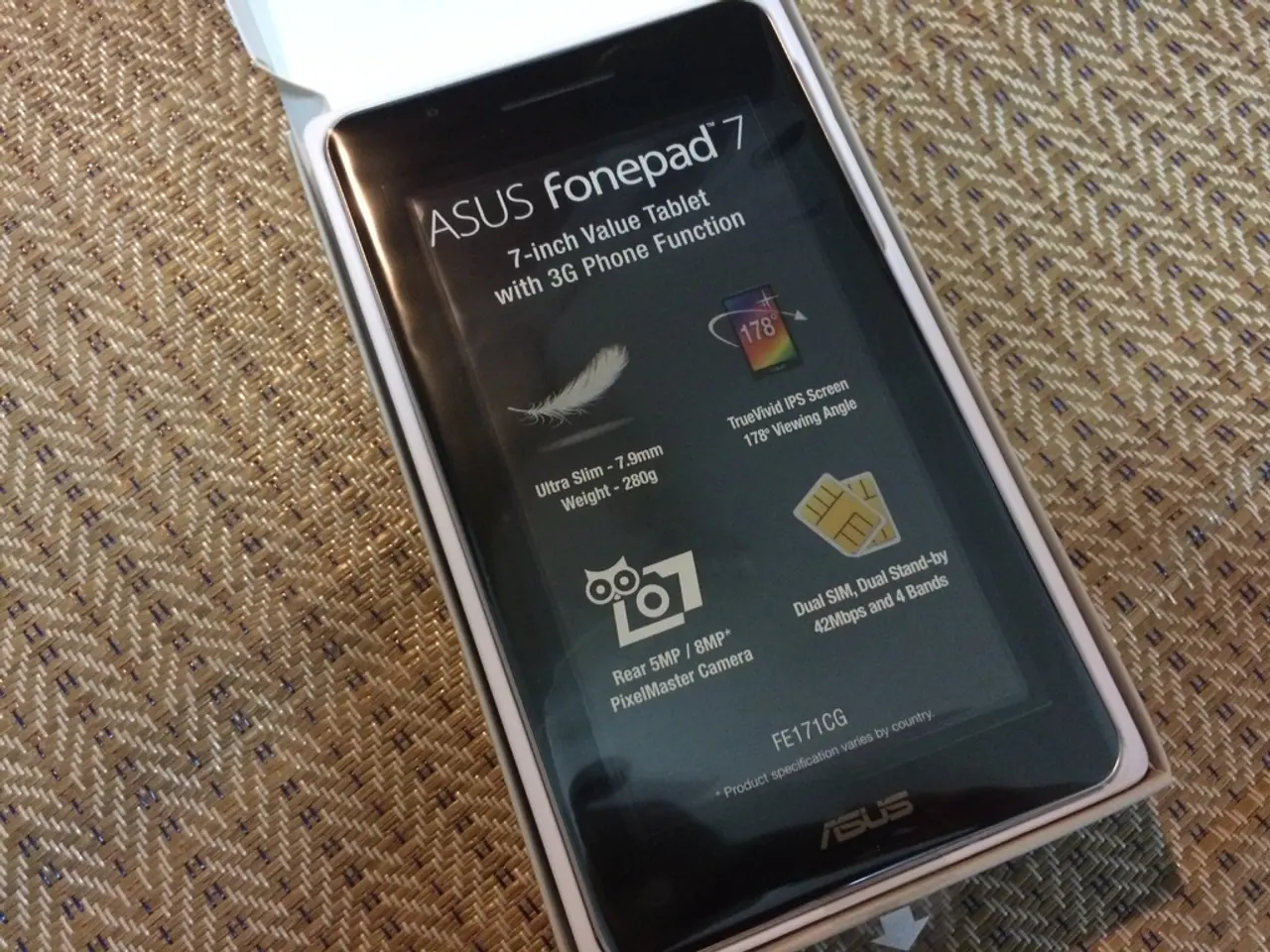Purchasing a smartphone directly may result in lower costs in the long run.
In the ever-evolving world of smartphones, the age-old question persists: Should I buy my device outright or opt for a plan? This dilemma is particularly relevant when considering two tech giants, Apple and Samsung.
SIM-only plans, a popular choice, offer the same data, talk, and text as phone contracts for far less. CHOICE, an independent consumer advocacy organisation, has partnered with WhistleOut to help consumers find the best plan for their needs. CHOICE is funded by members who value expert reviews and independent product testing, with no ads or sponsorship.
When it comes to buying smartphones, consumers have two main options: paying the full retail price upfront (buying outright) or financing the device through a carrier with monthly service fees or installment plans (buying on a plan).
Buying outright means investing a substantial sum initially, but it offers flexibility and avoids ongoing monthly plan commitments. For example, flagship phones like the iPhone 16 Pro Max or Samsung Galaxy S25 start around $829 to $1,199 or ~$799 respectively, depending on model and storage.
On the other hand, buying on a plan allows carriers to bundle the phone with service fees or financing options. Plans typically last 24-36 months. The monthly cost includes phone payments plus service charges (data, calls, texts). Many carriers offer promotions like trade-in discounts or even “free” phones with qualifying plan commitments.
Comparing the two options after the first year, several factors come into play.
Depreciation and resale value are crucial considerations. Samsung phones, while often cheaper initially, tend to depreciate faster than iPhones. iPhones hold their trade-in and resale value better, often fetching higher returns, which can offset the original higher price when buying outright.
Repair costs are another factor. iPhones are more expensive to repair, adding to ownership costs. Samsung repairs tend to be cheaper and more accessible, potentially lowering total cost of ownership for Samsung users.
Monthly plan costs vary widely, with lower-tier plans ranging from $20 to $50/month, excluding phone installments. Premium unlimited data and perks significantly increase cost. Financing phone purchases often involves no or low interest but extends payments beyond one year.
Promotional deals can reduce upfront cost but lock you into service contracts. Carriers sometimes offer “free” or discounted phones with plan commitments or trade-ins, making the upfront cost lower though monthly costs may be higher overall.
In summary, buying outright entails a large initial investment but may be financially beneficial after a year, especially for iPhones with better resale value. Buying on a plan spreads the cost but usually results in paying more overall due to monthly fees and interest. Trade-in and carrier deals can reduce upfront cost but lock you into service contracts. Samsung phones may cost less initially and for repairs but lose value faster compared to iPhones.
Weighing upfront price, monthly plan fees, depreciation, resale, repair costs, and promotions is essential for cost-effectiveness between Apple and Samsung phones. However, there is no exact published side-by-side cost comparison for these scenarios after the phone’s first year, so it's important for consumers to do their research and make an informed decision.
- CHOICE, an independent consumer advocacy organisation, suggests comparing the upfront price, monthly plan fees, depreciation, resale, repair costs, and promotions for smartphones, as weighing these factors is essential for cost-effectiveness between tech giants like Apple and Samsung.
- When it comes to gadgets such as smartphones, SIM-only plans can be a smart choice as they offer the same services as phone contracts for less, allowing consumers to save on their tech expenses and enjoy their favorite technology more affordably.




